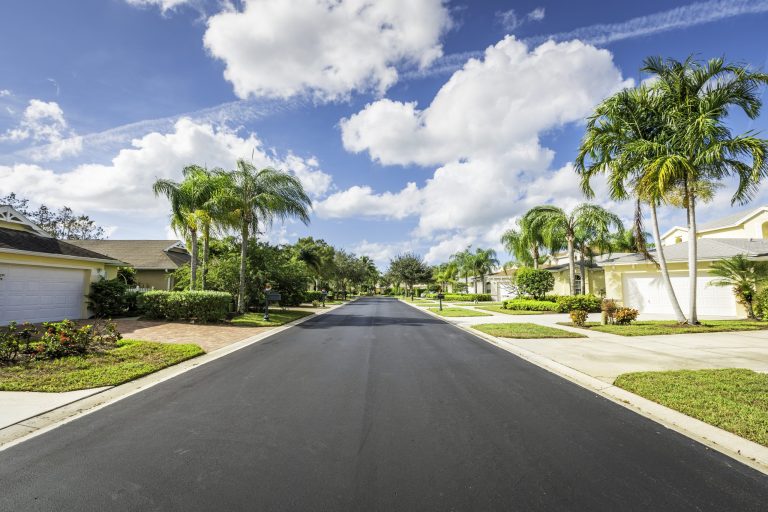Why Transparent HOA Administration Practices Are Vital for Trust Fund Building
This level of openness not only minimizes conflicts yet likewise urges higher neighborhood engagement. As we check out the effects of these methods, it ends up being apparent that the lasting benefits extend far beyond simple compliance-- eventually forming the extremely significance of community dynamics.
Relevance of Transparency in HOAs
Transparent practices foster liability and guarantee that all members are informed about operations and decisions impacting their community. This transparency not just demystifies the administration process yet additionally encourages community engagement, as participants feel equipped to participate in conversations and decision-making.
Furthermore, transparency can mitigate problems and misunderstandings. When homeowners are kept in the loophole about vital issues, such as policy enforcement or upkeep timetables, they are less most likely to really feel disenfranchised or dubious of the board's objectives. Additionally, transparent financial practices, such as in-depth reporting on expenditures, assist develop confidence that funds are handled prudently and in the area's benefit.

Ultimately, the significance of openness in HOAs can not be overstated. hoa management companies austin. It serves as the bedrock for an unified community, where locals feel valued and notified. By focusing on transparency, an HOA not just boosts its functional effectiveness but additionally strengthens the overall feeling of area amongst its members
Building Trust Fund Through Open Communication
Open up communication is essential for building count on within a property owners association (HOA), as it creates a direct line between the board and homeowners. Effective interaction cultivates transparency, making sure that all members are notified about choices, plans, and tasks that influence the area. They are more likely to view the board as approachable and accountable. when residents feel included in the dialogue.
Normal updates via newsletters, emails, or neighborhood meetings can help connect the void in between the board and house owners. These networks not just share info however additionally provide a platform for residents to voice issues, ask questions, and offer comments. This two-way interaction strengthens the concept that the board worths locals' point of views and is committed to addressing their needs.
In addition, open interaction can reduce misunderstandings and minimize problem. By giving clear explanations for choices, the board can minimize speculation and construct trustworthiness. This transparency grows an atmosphere of trust, where citizens feel great that their passions are being stood for.
Ultimately, a commitment to open interaction reinforces the connection in between the area and the board, preparing for a natural and harmonious living setting.
Enhancing Area Involvement
Neighborhood involvement works as a cornerstone for cultivating a natural and lively area within a home owners organization (HOA) When residents actively join area activities and decision-making procedures, they establish a more powerful sense of belonging and ownership. Clear management techniques play an essential role in facilitating this engagement by making certain that locals are informed and entailed.
Routine communication concerning HOA efforts, upcoming events, and area needs motivates involvement. This can be attained via newsletters, community conferences, and social networks platforms, creating networks for locals to voice problems, share ideas, and collaborate on jobs. By involving residents in the planning and implementation of neighborhood events, HOAs can cultivate a spirit of teamwork and shared regard.
Motivating involvement from all demographic sections within the community-- including family members, senior citizens, and singles-- enhances the collective experience and reinforces partnerships among residents. Inevitably, clear HOA administration not only boosts neighborhood engagement yet likewise lays the foundation for a unified and successful community.
Reducing Misunderstandings and disputes
Misunderstandings and problems often develop in property owners organizations because of vague plans or absence of communication. When assumptions and guidelines are not plainly articulated, homeowners might translate them in different ways, resulting in disagreements over compliance and enforcement. This uncertainty can create an adversarial environment, threatening the neighborhood's communication and trust.
Transparent monitoring practices play an essential duty in mitigating these issues. By supplying clear, accessible paperwork of plans, treatments, and decision-making procedures, property owners associations can aid make sure that all participants have a typical understanding of the regulations. Routine interaction via e-newsletters, community meetings, check over here and on pop over here the internet systems cultivates an environment where citizens really feel educated and involved.
Furthermore, transparency motivates open dialogue among citizens and monitoring. The possibility of misunderstandings decreases considerably when individuals feel they can voice their issues and receive timely reactions. Clear channels for feedback can also facilitate conflict resolution, as issues are addressed promptly and constructively.
Ultimately, reducing conflicts and misconceptions via clear methods not only boosts the overall area experience yet likewise enhances the trust in between homeowners and administration, preparing for a much more harmonious living environment.
Lasting Advantages of Transparency
Welcoming openness in property owners associations yields substantial long-term advantages that prolong beyond prompt dispute resolution. One of the primary benefits is the growing of trust amongst citizens and board members. When home owners feel informed concerning decisions, spending plans, and neighborhood initiatives, they are most likely to sustain the board's actions and participate in area activities, cultivating a sense of belonging and collaboration.
Additionally, transparent methods can lead to improved liability. Boards that honestly share info are more probable to abide by honest standards and make choices that mirror the neighborhood's benefits. This accountability can minimize the potential for mismanagement and corruption, eventually bring about much better administration.
Transparency also motivates proactive communication, making it possible for property owners to voice problems and contribute concepts for renovation. This comprehensive setting not only enhances area characteristics but likewise promotes innovative services to Read Full Report common obstacles.
Additionally, as count on develops gradually, home values may support and even boost, profiting all homeowners. hoa management companies austin. In summary, the long-lasting benefits of openness in HOA management create a successful, involved area where homeowners really feel valued, leading to sustainable consistency and development

Verdict
In recap, transparent HOA management techniques are vital for fostering trust within areas. By promoting open communication, boosting interaction, and minimizing problems, openness grows a much more cohesive living setting. The long-lasting benefits of these methods not only reinforce connections among residents yet also ensure efficient governance. Eventually, a commitment to openness serves as a foundation for liability and partnership, leading to a harmonious and well-functioning neighborhood.

Motivating involvement from all demographic segments within the community-- including songs, senior citizens, and families-- improves the collective experience and strengthens connections amongst residents. Normal communication with newsletters, community meetings, and on-line systems promotes an atmosphere where locals feel educated and involved.

When home owners feel notified concerning decisions, spending plans, and area efforts, they are extra likely to sustain the board's activities and participate in neighborhood tasks, promoting a feeling of belonging and collaboration.
 Andrea Barber Then & Now!
Andrea Barber Then & Now! Jennifer Love Hewitt Then & Now!
Jennifer Love Hewitt Then & Now! Kane Then & Now!
Kane Then & Now! Pauley Perrette Then & Now!
Pauley Perrette Then & Now! Tina Louise Then & Now!
Tina Louise Then & Now!